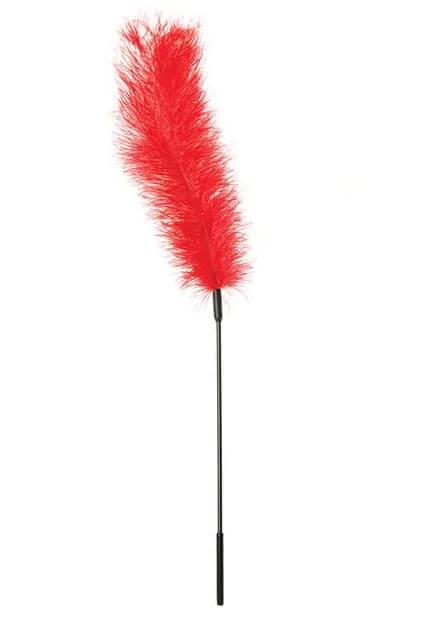Research on tickle fetishes is finally getting its due.
Earlier we explored the hidden world of tickling fetishes via a landmark study published in Frontiers in Psychology. The research uncovered common tickling practices and their connection to sexual activity, erotic enjoyment, and power dynamics.
In this second installment, we dig deeper into the different profiles and preferences of people interested in tickle fetishism. The findings reveal varying responses among the community and offer new insights into a topic long overlooked yet telling of our sexuality’s diversity.
Learning from the tickle fetish community

To untangle tickling’s complex nature and ties to sexuality, researchers surveyed hundreds of people on their tickle fetish experiences.
Available in English and Japanese, the survey received 719 responses (193 English and 526 Japanese) after it was promoted online by tickle fetish influencers.
With this data, researchers examined participants’ sensory perception, role preferences and favorite body parts for tickling.
They also explored preferred types of tickling, which fall into two main categories: knismesis and gargalesis.
Knismesis describes light, feather-like tickling that causes a mild tingling sensation. People can often give themselves these gentle tickles. It’s also the root of another word for tickle fetish: knismolagnia.
Gargalesis, in contrast, involves vigorous, high-pressure tickling of sensitive areas, leading to uncontrollable laughter. Unlike knismesis, it’s typically impossible to tickle oneself in this way.
Findings
The study provides a snapshot of trends, roles, and predilections within the tickle fetish community.
Ticklishness and touch preferences

Most respondents (77%) were ticklish, with 44% enjoying both light and heavy tickling.
However, as a person’s age increases, their likelihood of being ticklish decreases.
In terms of gender, women were generally more ticklish and preferred light tickling.
Both ticklers and ticklees, and those who enjoy both roles, tended to prefer the same body parts for tickling.
Intense tickling (gargalesis) was mostly focused on feet, armpits, torso, and stomach. Conversely, light tickling (knismesis) covered the entire body, including back, neck, ears, genitals, and arms.
Notably, more than a third of participants (38%) experienced distress when tickled. “[W]e assume that the distress in ticklees is what they actively seek, which indicates that the tickle fetishism is a part of BDSM,” said study lead Shimpei Ishiyama, Ph.D.
Varied sensitivity to tickling over time
To the surprise of researchers, respondents had different reactions to continuous tickling.
“Some people said it gets less ticklish, others said it gets more ticklish, others said it does not change, and others said it is different every time,” said Dr. Ishiyama.
In total, 41% of ticklees reported increased ticklishness over time, while 16% experienced varied sensations.
Tickle fetish roles

In terms of roles—tickler, ticklee, or both—preferences were divided.
More than a third (36%) said they were ticklees, 30% were ticklers, and 34% enjoyed both roles.
But not everyone was happy to swap. While 41% of ticklers were okay with or enjoyed being tickled, 33% disliked it. On the other hand, 63% of ticklees enjoyed tickling others.
“This could be related to social dynamics: dominance and submissive, where dominant individuals are more sensitive to change in social hierarchy than submissive individuals, e.g. shown in mice studies,” said Dr. Ishiyama.
Ticklish individuals were also more likely to prefer being tickled, while unticklish individuals tended to prefer tickling. This aligns with the finding that most women (76%) said they preferred being tickled.
Tickling the body and the mind
These discoveries paint a clearer picture of the tickle fetish community, sparking new questions.
The study identified key trends, behaviors, and tastes among tickle fetishists. Ticklers and ticklees shared the same body part preferences for different types of tickling, but their enjoyment varied significantly when switching roles. In addition, higher ticklishness was linked to a preference for being tickled rather than tickling others.
The fact that ticklishness can change over time beckons further scientific inquiry.
“Usually sensitization/desensitization is physiologically determined and thus must be relatively consistent among people,” said Dr. Ishiyama.
“This heterogeneity in ticklishness we observed might be influenced by psychological impact in addition to physiological basis. This needs more detailed investigations.”
As tickle fetish research advances, we eagerly await revelations on how both the body and mind shape the tickling experience—and vice versa.




